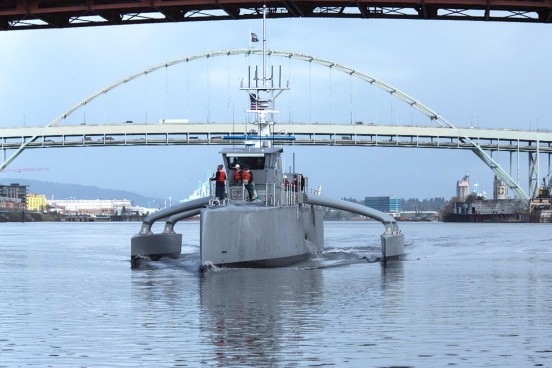Acknowledgements to prime contractor of the program Leidos, Inc.
China and Russia (and other countries including Iran) have been adding relatively cheap and virtually silent, diesel-electric submarines to their fleets. These subs are quickly becoming one of the biggest threats to naval operations and to a $1.8 trillion commercial shipping industry. Detecting and tracking these stealthy subs presents a huge challenge even for the U.S. Navy, the world’s most technologically advanced fleet. Rear Admiral Frank Drennan, commander of the Naval Mine and Anti-Submarine Warfare Command, put it this way, “[picking up the quiet hum of a battery-powered, diesel-electric submarine in busy coastal waters is] like trying to identify the sound of a single car engine in the din of a major city.”
To counter this threat, Advanced Research Projects Agency, or DARPA, has developed the world’s largest (140-ton, 132-foot long) unmanned surface vessel, Sea Hunter. The ship can track enemy submarines for thousands of miles with no one on board. Sea Hunter isn’t joy-stick operated like a drone. Instead, it uses radar, sonar, cameras and a global positioning system to operate completely autonomously.
Sea Hunter is now beginning a two-year test period. During that time, humans will supervise its operation until it proves itself. If tests are successful, future versions may be armed and used for anti-submarine and counter-mine duties, operating at a small fraction of the cost of operating a destroyer ($15,000-$20,000 per day compared to $700,000 per day).
Deputy US Defense Secretary Robert Work said that if weapons are added to the ship, a human would always remotely make the decision to use lethal force.
